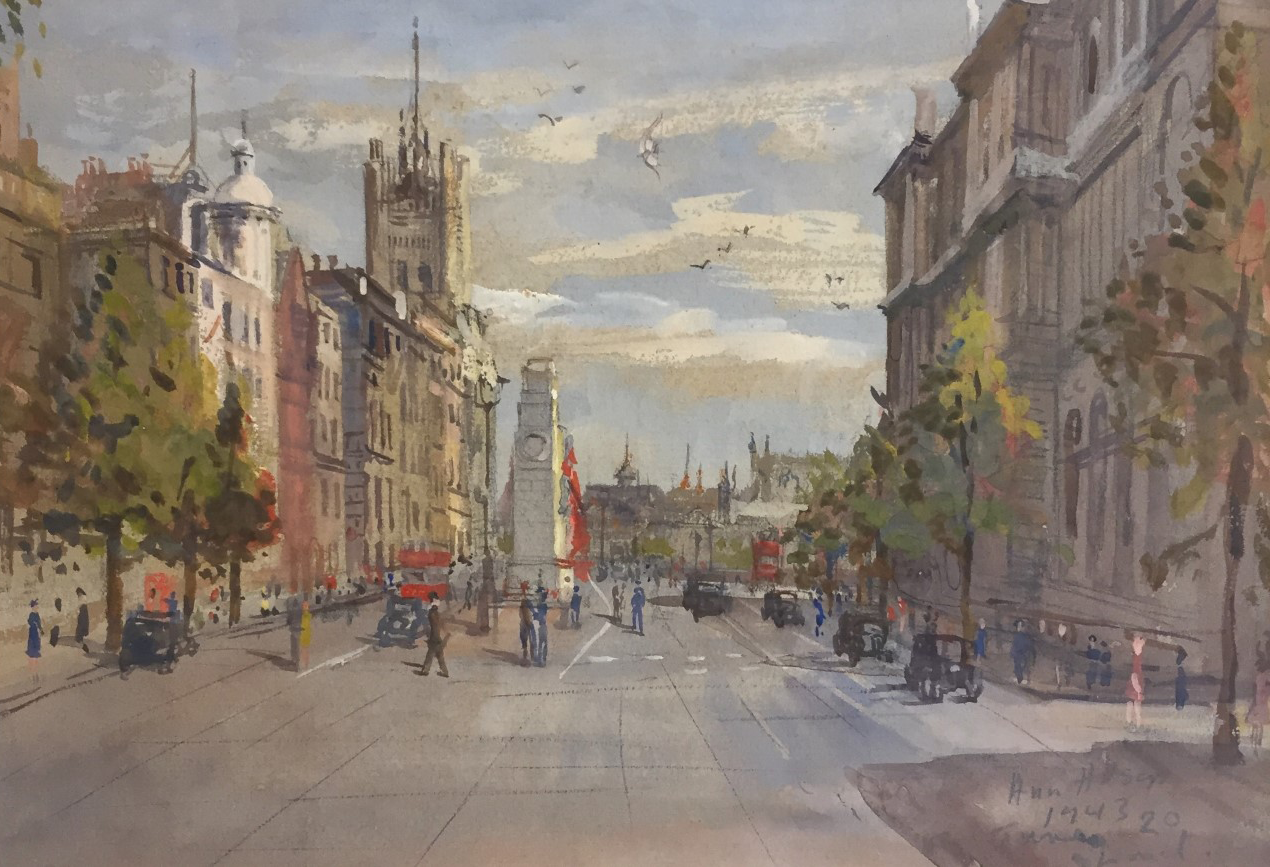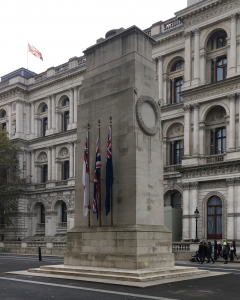
The Cenotaph in Whitehall, London has provided the focus for the nation’s Service of Remembrance for 100 years.
The Cenotaph, which means empty tomb in Greek, was designed and built by the famous architect Edwin Lutyens at the request of the Prime Minister Lloyd George. It was originally made out of wood and plaster for the first anniversary of the Armistice in 1919. As soon as the monument was unveiled people spontaneously covered its base in wreaths of remembrance for the dead and missing of The Great War. In response to the public’s enthusiasm for this focus of national memorial it was decided that it should be re-constructed permanently in Portland stone. The finished Cenotaph was unveiled in 1920 and bears the poignantly inscription ‘The Glorious Dead’.
Sir Fabian Ware founded the Imperial War Graves Commission (later the Commonwealth War Graves Commission) and in 1917 it received its Royal Charter with the Prince of Wales as President. At 45 years old Ware was too old to fight, instead he commanded a mobile unit of the British Red Cross. As he witnessed the terrible human cost of the war Ware became convinced that the resting place of the dead should never be lost and began to record the graves of the fallen as early as 1915.

The Commission consulted some of the most eminent architects of the day. Sir Edwin Lutyens, Sir Herbert Baker and Sir Reginald Blomfield were chosen to begin the work of designing and constructing the cemeteries and memorials. Rudyard Kipling was tasked as literary advisor to recommend inscriptions.
In the aftermath of the First World War the British people at home also needed a focus for their sense of grief, sacrifice and pride. Countless War Memorials were erected the length and breadth of Britain often by public subscription. It was the greatest expression of remembrance this nation had ever seen.
This coming week we will once again reflect upon the costs of defending righteousness, freedom and liberty, giving thanks not only for our allies but also for reconciliation and peace.
In churches across Britain, Europe and America the common story and Christian heritage which unites us will be expressed in services of Remembrance and thanksgiving. Beside War Memorials across Britain these familiar bidding words will be heard:
“We have come to remember before God those who have died for their country in the two world wars and the many conflicts of the years that have followed. Some we knew and loved: we treasure their memory still. Others are unknown to us: to their remembrance too, we give our time…With thanksgiving we recall services offered and sacrifices made…”
I hope that each of us will be able to find time in this Remembrance Sunday to reflect, offering thanks and prayers for the courage of successive generations who have been called, and continue to be called, to defend the greater cause of justice and concord.
By Rupert Toovey, a senior director of Toovey’s, the leading fine art auction house in West Sussex, based on the A24 at Washington. Originally published in the West Sussex Gazette.